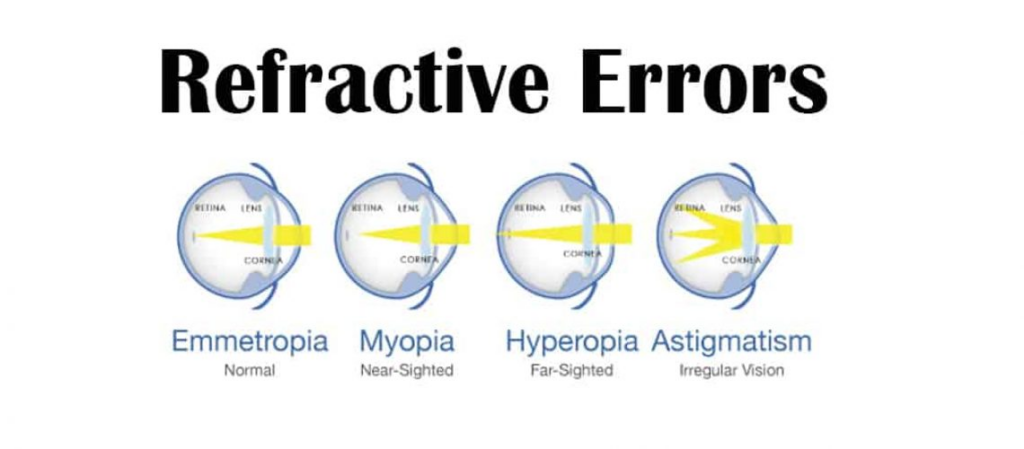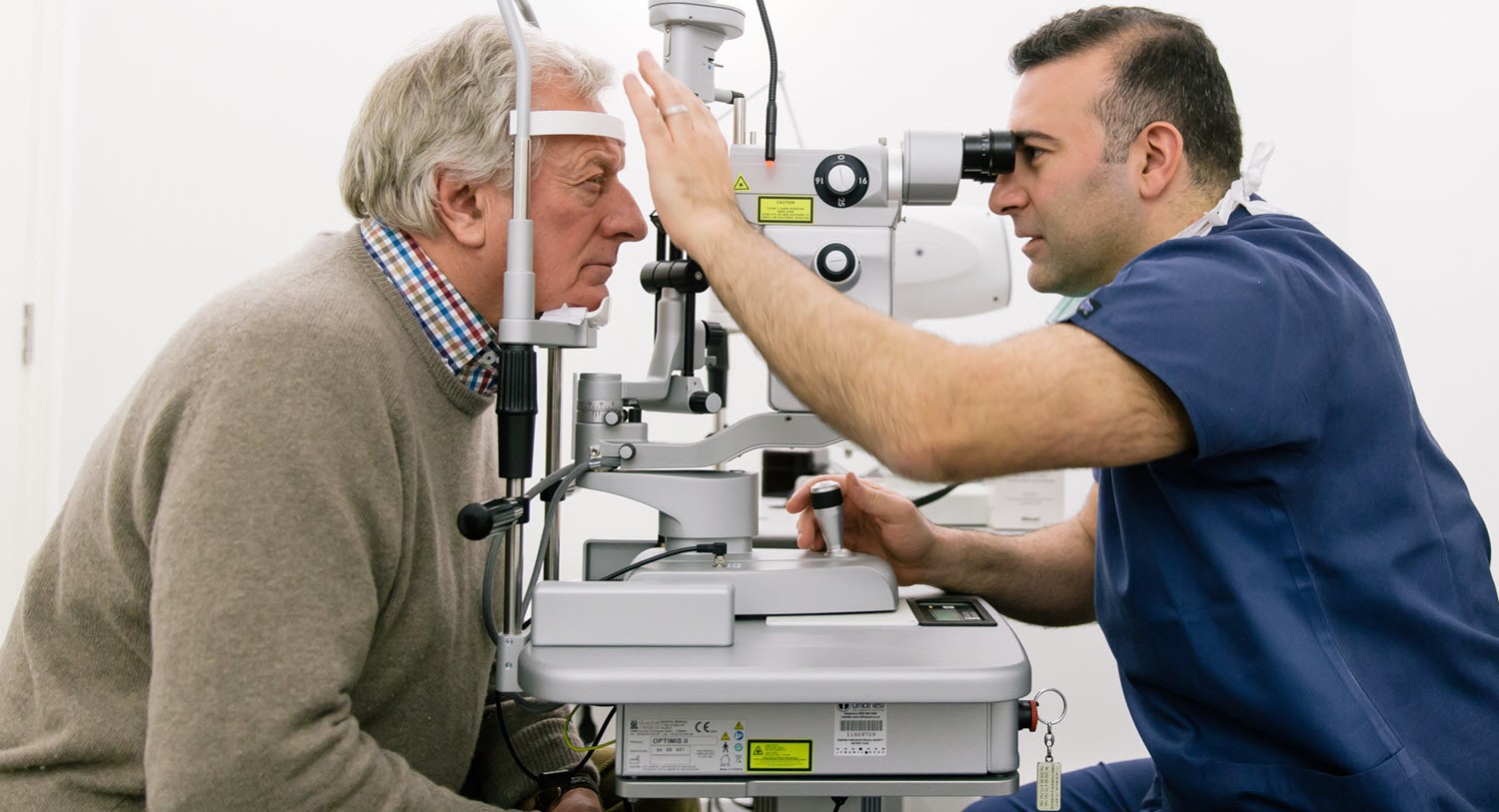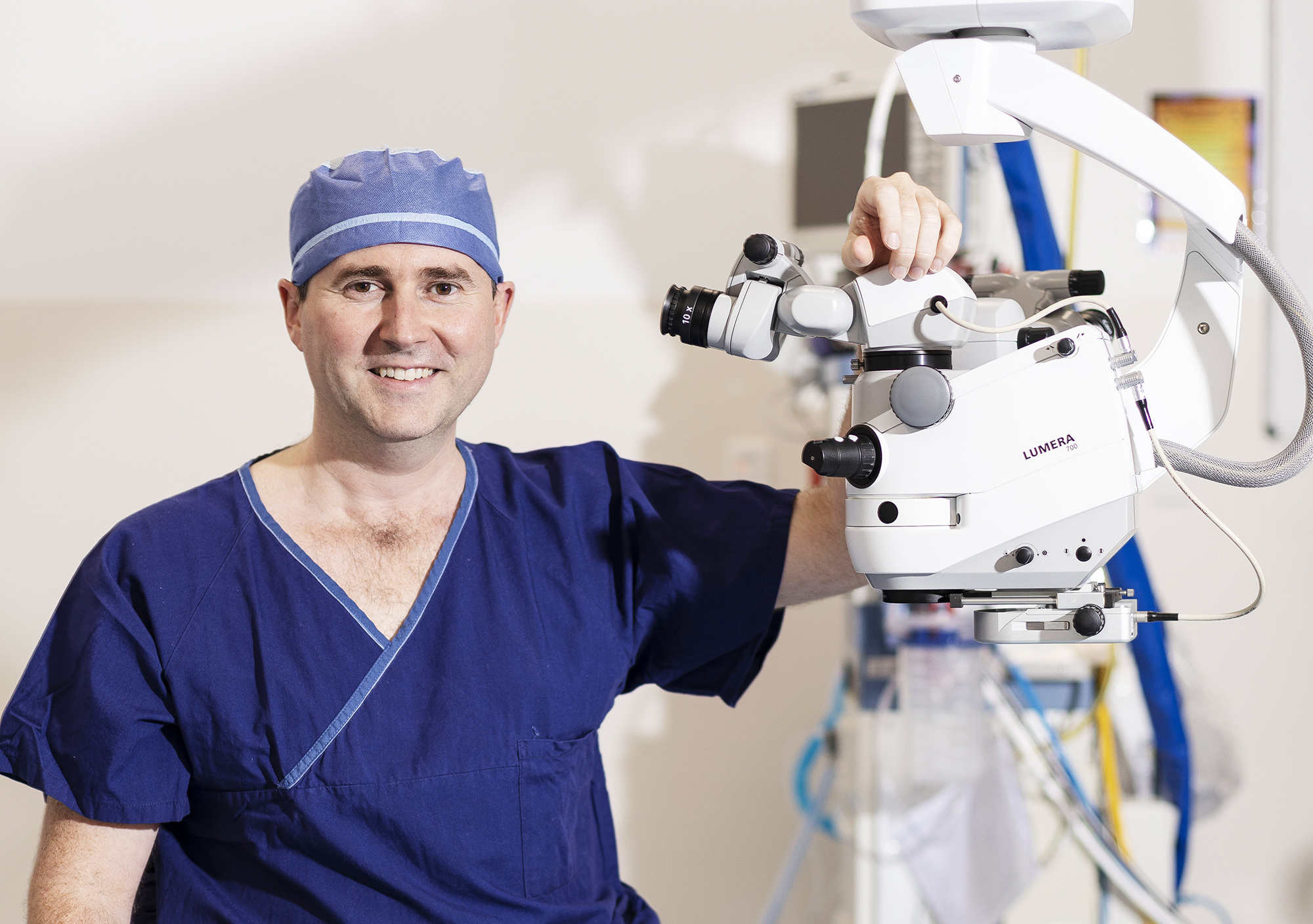What is a refractive error? Our Sydney Eye Clinic Specialist Explains.
Light reflected from an object enters the eye through the cornea in a healthy person’s eye (the clear, curved surface that protects the front of the eye). Light rays are first bent (refracted) by the cornea before passing through to the eye’s natural lens. The lens then refracts the light rays once more to bring them into a pinpoint focus on the retina (back layer of the eye containing light-sensitive cells).
The light rays are transformed into electrical impulses by the retinal cells, which are then sent to the brain (through the optic nerve).
When light rays are not properly focused on the retina, a refractive error has occurred due to an imperfection in the eye’s shape.

Usual Refractive Defects
The eye’s ability to focus clearly at various distances is affected by all refractive defects which are more thouroghly define on https://www.personaleyes.com.au/locations/sydney-cbd. However, there is a wide variety of refractive defects, each with its own unique set of symptoms and methods by which vision is impaired. The cornea, the lens, and the length of the eye all have a role in the eye’s capacity to concentrate light.
What Exactly is “Myopia”?
Myopic patients, who also suffer from near-sightedness, have no trouble seeing things up close but have trouble focusing on things that are further away. When the cornea or lens is overly curved and bends light too forcefully, when the eye is excessively long, or when both of these variables are present, myopia results.
Therefore, the light rays diverge in front of the retina rather than focusing on it.
Myopia is a refractive error that causes nearsightedness and farsightedness and often manifests in early infancy and can increase with age as the eye’s structure changes. A lack of outdoor activity and too much time spent in front of screens has been linked to more severe forms of the disorder.

The majority of people with myopia see a worsening of their condition until they are in their early twenties. The condition can persist until one’s late twenties or beyond for some.
What Are the Characteristics of Hyperopia?
Hyperopia, often known as “long-sightedness,” “far-sightedness,” or “hypermetropia,” causes one to see things at a distance clearly while those close look blurry. This typically happens when the eye is abnormally short, the cornea (or lens) is abnormally flat, or both.

Light concentrates behind, rather than on, the retina because the flattened cornea cannot bend light rays firmly enough. Although long-sightedness can develop at any age, it often worsens after the age of 40.
What Exactly is Astigmatism?
Distorted or blurred vision at all distances is a hallmark of astigmatism. An improperly rounded cornea causes astigmatism (i.e., shaped more like a rugby ball than a soccer ball). That’s why it’s impossible for light rays to be focused in a single spot on the retina after they pass through the cornea.

Most people have some degree of corneal asymmetry, making astigmatism a frequent diagnosis. Severe cases of astigmatism can cause very distorted vision, almost like looking through a funhouse mirror, while moderate cases may go unnoticed until a routine eye test is performed.
Most People Aren’t Used to the Term Presbyopia
Slowly but surely, presbyopia sets in when the lens of the eye hardens and the muscles around the lens weaken. The lens of the eye changes shape to increase its ability to refract (bend) light when focusing on nearby objects. In particular, its convexity improves. When we become older, the lens loses its capacity to accomplish this, and the image becomes blurry and out of focus on the retina.
Presbyopia is a gradual loss of near vision that manifests itself in difficulties with reading and other close-up activities that commonly affect people aged 40 to 65. Presbyopia is a refractive defect that often occurs in conjunction with other refractive errors, such as myopia or astigmatism, in persons of advanced age.
When Does a Refractive Error Show Up?
Vision problems include: blurriness, distortion, difficulty concentrating on close or far objects, squinting, eye strain, and fatigue when reading.
All of these conditions call for a trip to the optometrist for a thorough checkup.
How Can Doctors Identify Refractive Errors?
An optometrist or orthoptist can detect refractive problems during a full eye exam.
A visual acuity test (using a Snellen chart) will be performed to determine how well you can see at a distance during the examination. A refraction exam measures how effectively your eyes focus light and determines whether or not you need corrective glasses or contacts.
There may be additional evaluations to check on the state of other aspects of the eye’s health and functionality. You may read more about the need of regular eye exams and other information related to your eyes’ health on our main page.
Every year to two years, you should get a thorough eye exam since the shape of your eye and the severity of refractive problems might vary.
Intervention for Refractive Error
Depending on the individual’s age, lifestyle, and degree of refractive error, a variety of corrective options are available, including glasses, contact lenses, laser eye surgery, and refractive lens exchange.
In laser eye surgery, the cornea is permanently reshaped to alter the refractive power and improve the way light is focused on the retina. Myopia, hyperopia, and/or astigmatism, and presbyopia are all conditions that often respond well to this form of corrective eye surgery.
Read more about laser eye surgery and the services we provide on this website.
Patients over the age of 50 who are experiencing or at risk for presbyopia often have refractive lens exchange, another kind of vision correction surgery. An artificial lens is implanted in place of the patient’s native lens during this treatment (known as an intraocular lens). Please visit our page on cataract and lens surgery for further details and to find out about the many lens choices that are currently available.
Lastly
If you are having any question or inquiry about how to have a correct vision, cataract surgery, Laser eye surgery, laser vision correction, diabetic retinopathy, franzco medical retina, minimally invasive glaucoma surgery, normally clear lens, vision loss, retinal conditions, short sightedness, – you should get in touch with us via our Personal Eyes website to book your free assessment today.
Consider the factors outlined in this blog post, weigh the pros and cons, and most importantly, consult with a Sydney cataract surgeon at Personal Eyes before making the final decision.


